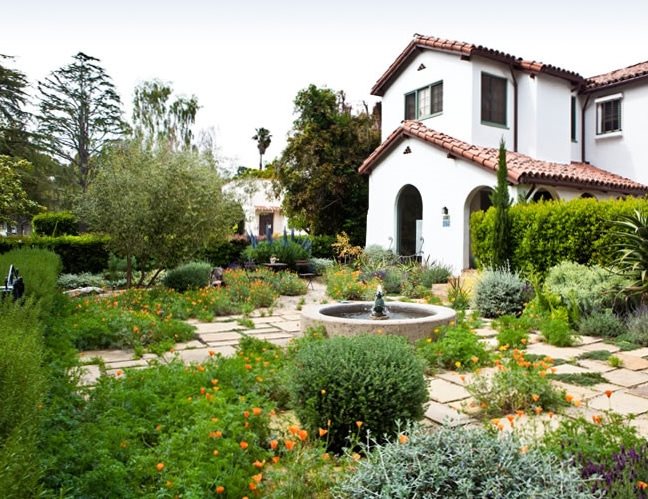Some Known Incorrect Statements About Hilton Head Landscapes
Some Known Incorrect Statements About Hilton Head Landscapes
Blog Article
About Hilton Head Landscapes
Table of ContentsRumored Buzz on Hilton Head LandscapesFacts About Hilton Head Landscapes UncoveredThe smart Trick of Hilton Head Landscapes That Nobody is Talking AboutThe 15-Second Trick For Hilton Head LandscapesHilton Head Landscapes Can Be Fun For EveryoneHilton Head Landscapes Can Be Fun For EveryoneHilton Head Landscapes Fundamentals Explained
Line produces all kinds and patterns and can be utilized in a variety of methods the landscape. Line in the landscape is produced by the side between 2 materials, the overview or shape of a form, or a long direct feature. Lines are a powerful tool for the developer because they can be utilized to develop an infinite range of shapes and forms, and they control motion of the eye and the body.

Lines can have one or more qualities, such as those described below, however they generally offer various functions. Figure 1. Lines in the landscape - bluffton landscaping. The residential or commercial properties of lines figure out just how individuals react to the landscape, both mentally and physically. Straight lines are structural and strong; they create an official character, are generally connected with a symmetrical layout, and lead the eye directly to a prime focus.
4 Simple Techniques For Hilton Head Landscapes
Rounded lines create an informal, all-natural, loosened up character that is linked much more with nature and asymmetrical balance. Bent lines relocate the eye at a slower pace and include mystery to the space by producing surprise views.
Upright lines in the landscape consist of high, slim plant material, such as trees, or high frameworks, such as an arbor or a bird home on a pole. Straight lines move the eye along the ground plane and can make a space really feel larger. Reduced lines are a lot more suppressed and develop a feeling of rest or repose.
The 8-Second Trick For Hilton Head Landscapes
Low lines are produced by low yard wall surfaces, sidewalks, and brief hedges. Lines are used to attract kinds on a strategy. In strategy view, they specify plant beds and hardscape locations. Lines are additionally created by the vertical forms of developed features and plant product. There are 3 primary line types that create type in the landscape: bedlines, hardscape lines, and plant lines.
Bedlines attach plant material to your house and hardscape because the eye follows the line, moving the look through the landscape. Hardscape lines are developed by the edge of the hardscape, which marks the constructed structure. Line can additionally be created by long and slim products, such as a fence or wall surface.
Top Guidelines Of Hilton Head Landscapes
Type is located in both hardscape and plants, and it is commonly the dominant visual element that spatially organizes the landscape and usually figures out the style of the yard. The kind of frameworks, plant beds, and yard ornaments additionally determines the total type theme of the yard. Formal, geometric types consist of circles, squares, and polygons.
Plants develop form in the garden with their details or silhouettes, however kind can additionally be defined by a space or adverse space in between plants - landscapers hilton head island (https://www.ted.com/profiles/47214730). Circles can be cycles, or they can be divided right into fifty percent circles or circle sections and integrated with lines to produce arcs and tangents
Fascination About Hilton Head Landscapes
Circles are a strong layout form because the eye is always attracted to the center, which can be used to stress a focal factor or attach various other forms. Round forms in hardscape and lawn panels.
The square type can also be segmented and secondhand repetitively to create a grid pattern. Unlike circles, squares are stronger on the sides, which can be lined up or overlapped to develop special patterns and even more complex types.
Twisting lines commonly simulate the all-natural training course of rivers or streams and can be called smooth lines with deeply rounded wavinesses. Meandering lines (Figure 3) function well for visit our website paths, plant bedlines, and dry stream beds. Meandering lines can include interest and enigma to a yard by leading customers around corners to uncover new sights and spaces.
The Hilton Head Landscapes Diaries

Typical plant types are well established and standard, as form is the most regular and identifiable characteristic of plants. Kind can additionally be produced via the massing of plants, where the total mass creates a various kind than an individual plant.
An extremely contrasting form must be made use of with careone or more job well as a prime focus, but a lot of produce disorder. All-natural plant types, instead than over-trimmed forms, ought to develop the bulk of the make-up. The significance of overall type is essentially based on the seeing perspectivethe kind of a tree can appear quite different to an individual standing under the canopy versus watching the tree from a range in an open field.
Everything about Hilton Head Landscapes
Plant kinds additionally create and define deep space or open areas in between the plants, developing either convex or scooped kinds in deep spaces. High-arching tree branches commonly develop a concave open space under the branches, and a round cover with reduced branches fills the room to create a convex form in the open space under the tree.

Report this page